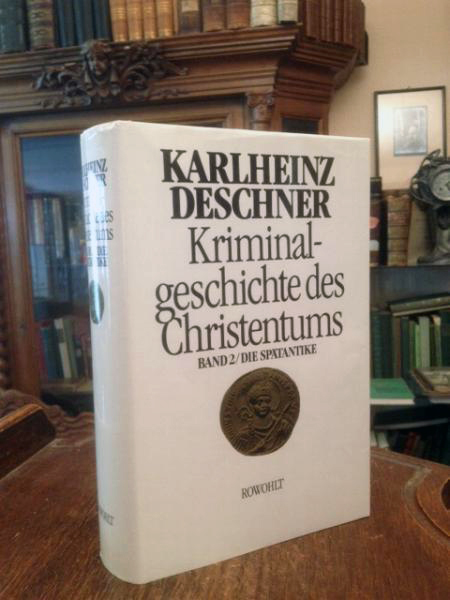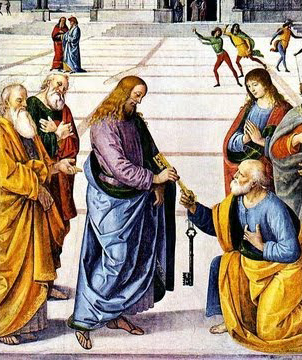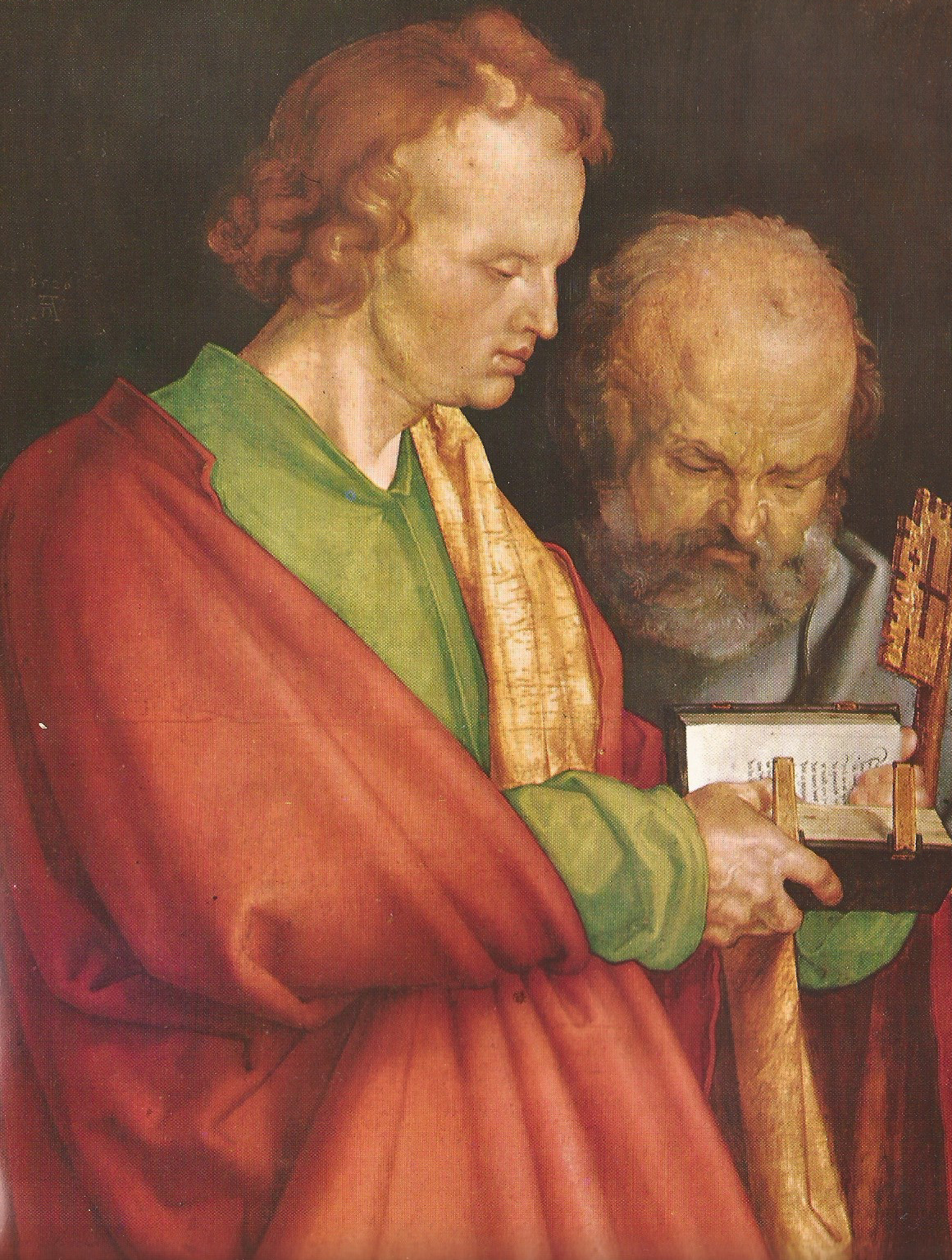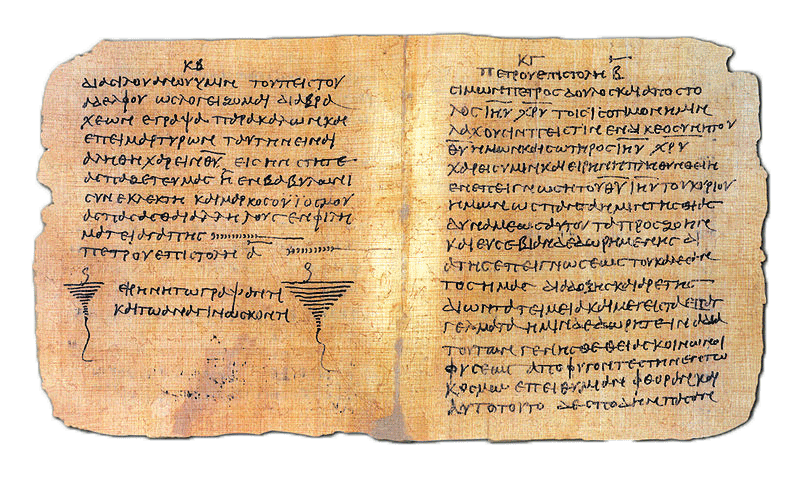Below, an abridged translation from the second volume of
Karlheinz Deschner’s Kriminalgeschichte des Christentums.
As the historical-critical exegesis of the Bible teaches us, Jesus—the apocalyptic man who, totally within the tradition of the Jewish prophets, waits for the immediate end: the irruption of the ‘God’s imperial rule’, and thereby makes a complete mistake (one of the most solid results of exegetical investigation)—certainly did not want to found any Church or institute priests, bishops, patriarchs and popes.
As late as the middle of the 2nd century, the Roman Christian community had about thirty thousand members and 155 clerics. None knew anything about the appointment of Peter, nor about his stay and martyrdom in Rome.
The list of fabricated Roman bishops
The oldest list of Roman bishops was provided by the father of the Church, Irenaeus, Bishop of Lyon, in his work Adversus Haereses, roughly between the years 180 and 185. The original Greek text is not preserved; only a complete Latin copy of the 3rd century or 4th, if not the 5th. Literature about it is hardly noticeable, the text is ‘spoiled’ in a manifest way. What remains a mystery is the origin of the list. Ireneus wrote down a little more than the names.
And nowhere is there talk of a primacy of Peter! By the end of the 2nd century Peter was not yet counted in Rome among the bishops. And in the 4th century it is affirmed that he was pope for twenty-five years! Bishop Eusebius, a historian of little confidence, even guilty of falsification of documents, transmitted in his time the succession of Roman bishops.
Eusebius ‘perfected’ also the list of Alexandrian bishops, very similar to that of the Romans. The same with the Antioquian list, associating an Olympiad with each one of the bishops Cornelius, Eros and Theophilus. In the list of bishops of Jerusalem he also worked with artificial computations, not having ‘practically any written news’ of the years in which they were in office. Later, Bishop Epiphanius made an exact dating comparing it with that of the emperors.
Around the year 354, the Catalogus Liberianus (Liberian Catalogue), a relation of popes that goes from Peter to Liberius, indicating dates in days and months, was continued and ‘completed’, as indicated by the Catholic Gelmi, who immediately added: ‘All these data have no historical value’.
The Liber Pontificalis (Book of the Popes), the official book of the popes, the oldest list of the Roman bishops, contains ‘a great abundance of falsified or legendary material’, which the author ‘completes by new findings’ (Caspar). In short, it carries so many fabrications that until the 6th century it has hardly any historical value, not naming Peter, but a certain Linus, as the first bishop of the city. Thereafter Linus is in second place and Peter in the first.
In the end a ‘position of Peter’ is constructed (Karrer) and becomes ‘papacy’. ‘Like a seed’, writes the Jesuit Hans Grotz in a poetic way, ‘Peter fell on the Roman earth’. And then many others fell, as is still happening today. Little by little all the ‘successors’ of Peter could be counted, as has been said, with the year in which they acceded to the papacy and the date of their death, apparently in an uninterrupted succession. (Editor’s Note: Deschner’s books have no illustrations but see the image that I chose for this post: part of a poster of the purported bishops of Rome from St. Peter to Pope Francis under the heading ‘I Sommi Pontefici Romani’. The poster is so large that, already unfolded, I had to hang it on a wall to photograph it.)
However, over time the list of Roman bishops was modified, perfected, completed in such a way that, in a table compiled by five Byzantine chroniclers, of the first twenty-eight bishops of Rome only in four places do the figures agree in all columns. Indeed, the final editor of the text, perhaps Pope Gregory I, seems to have expanded the list of names to include twelve saints, in parallel with the twelve apostles. In any case, the list of Roman bishops of the first two centuries is as unreliable as that of the list of the Alexandrians or Antiochenes, and ‘in the first decades it is pure arbitrariness’ (Heussi).
Note of the Ed.: Fabricated list of popes. Starting at the left,
St. Peter. Note the noblest faces the artist used for these
non-existent popes to make the faithful believe that the first
popes were not only saints, but also holy men of the white race.
The invention of a series of traditional names and tables, partly constructed, artificially filling the gaps, existed long before the appearance of Christianity and its lists of bishops falsified from the beginning. It is comparable to the Old Testament genealogies, which through a succession of names without empty gaps, guaranteed participation in the divine promises; especially the list of high priests after the exile, as a list of rulers of Israel.
Furthermore, the ancient pastors of Rome were not considered in any way ‘popes’. For a long time they had ‘no other title than that of the other bishops’ (Bihimeyer, Catholic). Whereas in the East, patriarchs, bishops and abbots were long known as ‘popes’ (pappas, papa, father), this designation appears in Rome for the first time on a tombstone from the time of Liberius (papacy 352-366).
At the end of the 5th century, the notion acquired a naturalisation certificate in the West, where the Roman bishops used the word ‘pope’ to call themselves, along with other bishops, although they did not do so regularly until the end of the 8th century. And until the second millennium the word ‘pope’ does not become an exclusive privilege for the bishops of Rome.
The first to refer to Mt, 16, 18, is, of course, the despotic Stephen I (papacy 354-357). With his hierarchical-monarchical conception of the Church, rather than episcopal and collegial, it is to a certain extent the first pope.
Not even Augustine, so fond of Rome but sometimes oscillating delicately among the pope and his African brothers, defends papal primacy. That is why Vatican I, of 1870, even reproached his ‘erroneous opinions’ (pravae sententiae) to the famous father of the Church. Sumus christiani, non petriani, ‘We are Christians, not Petrians’, Augustine had affirmed.
Similarly, like the bishops and fathers of the Church, the ancient councils did not recognise the primacy of law of Rome.
______ 卐 ______
Liked it? Take a second to support this site.










